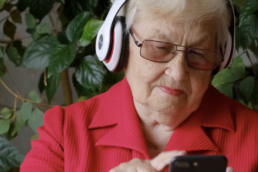Title: Reduced excitatory neurotransmission in the hippocampus after inflammation and sevoflurane anaesthesia
Author: Rossi Tomin
Editor: Georgia Hadjis
Perioperative neurocognitive disorders (PNDs) are deficits in attention, memory, executive function, and delirium that are regularly encountered postoperatively in adult patients. PNDs can be short or long-term and are correlated with additional long-term detrimental effects such as early retirement and increased mortality rates. While recently developed animal models show the combination of inflammation and general anaesthesia to be potential contributing factors, the exact mechanisms by which PNDs occur are unknown. To date, no effective preventative or treatment factors for PNDs exist. UTCSP member Dr. Beverley Orser and colleagues used an animal model to investigate the effects of an inflammatory response, coupled with application of a general anaesthetic, on excitatory synaptic transmission in the hippocampus, with an emphasis on the Schaffer collateral-CA1 pathway, which is important in learning and memory.
A previously employed animal model of anaesthetic-treated inflammation found a dysregulation in excitatory/inhibitory neurotransmission in the CA1 region of the hippocampus in the form of increased tonic inhibition , but excitatory neurotransmission was not investigated directly. To examine the excitatory component of the dysregulation, the authors generated a lipopolysaccharide (LPS) and sevoflurane inflammation/anaesthesia model and used whole-cell voltage clamp recordings to observe the activity of CA1 neurons. The authors found a reduced amplitude of miniature excitatory postsynaptic currents –which occur due to presynaptic glutamate release– that may result either from a reduction in function or quantity of postsynaptic AMPA receptors or a reduction of presynaptic glutamate release.
The results of this study, published in the British Journal of Anaesthesia, indicate a disruption in the excitatory and inhibitory balance of neurotransmission in the CA1 neurons of mice. This finding further elucidates the contribution of dysregulated neurotransmission on PNDs and provides future potential therapeutic targets for the reinstatement of excitatory and inhibitory equilibrium.
Read more here:
Khodaei, S., Wang, D. S., Orser, B. A., (2023). Reduced excitatory neurotransmission in the hippocampus after inflammation and sevoflurane anaesthesia. British Journal of Anaesthesia, BJA Open, Volume 6, 2023, 100143, ISSN 2772-6096, https://doi.org/10.1016/j.bjao.2023.100143

